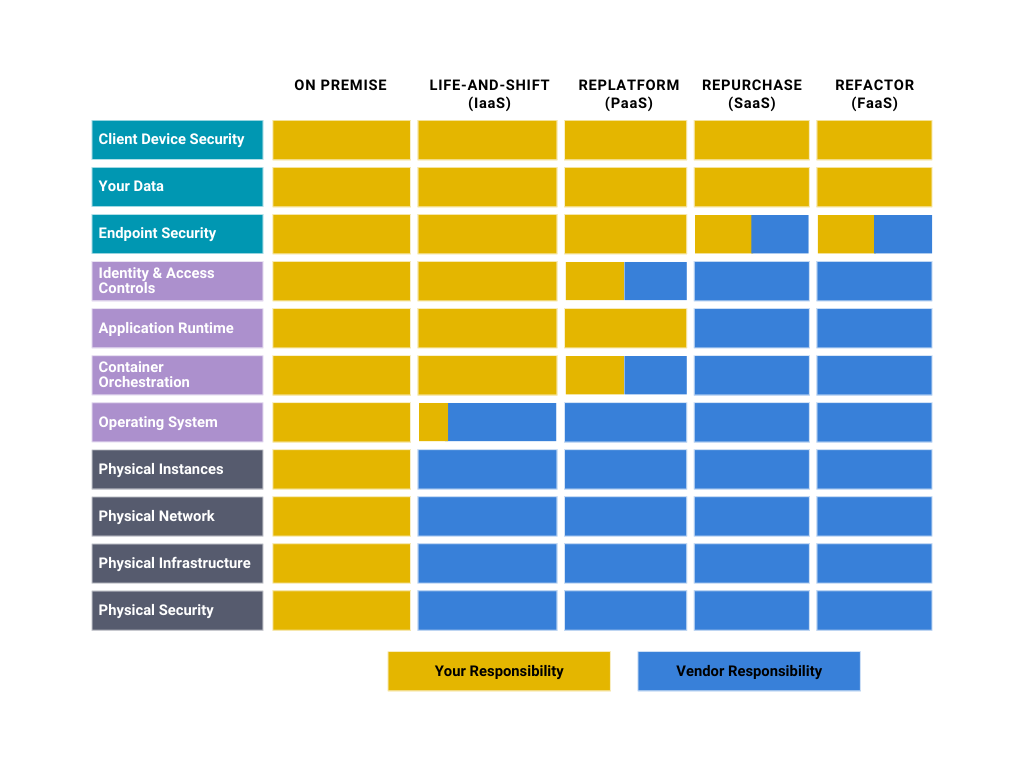By the end of 2023, 91% of banks and insurers were reported to have started their cloud journey [1]. In doing so, organisations are hoping to achieve key rewards from effective cloud migration:
-
Increased speed of delivery
-
Better scalability, performance and reliability
-
Increased security and compliance
-
Cost flexibility in line with consumption
-
Lower energy consumption – reduced carbon emissions
-
Less time firefighting – more time for new features and capabilities
The State of Cloud Adoption
For many industries, cloud adoption is a given. In the more regulated financial sector where data privacy is key, there is justification for a more “wait-and-see” approach to moving workloads from the data centre to the cloud. By holding off on public cloud adoption until now, IT leaders can benefit from the increased maturity of cloud technology. Cloud vendors and practitioners have honed many best practices and strengthened their offerings significantly over the past two decades.
Of course, a downside has emerged over this time too. The breadth of products and features available in the cloud has increased dramatically. As a result, the number of options to choose from is greater now, and the potential complexity of cloud architecture has also increased. As practitioners in cloud technology for more than a decade, we want to use this opportunity to address the challenges of moving to the cloud for any financial services technology leader planning a migration in 2024.
Challenges in Cloud Migration
We frequently hear concerns from clients in a similar position.
- “How can we start if we don’t have the skills or capacity in-house?”
- “What is the right migration path?”
- “How do I ensure data privacy and security?”
- “Is this going to break compliance?”
- “Are costs going to spiral out of control?”
All of these challenges are real and the concern is well justified. Sufficient planning and guidance can alleviate the risk. Here is our high-level advice but feel free to get in touch for a more detailed answer.
Overcoming the Skills Gap
Your current engineering team most probably has the potential to be the fast-moving, cloud-savvy squad of the future but the transformation doesn’t happen overnight. In an environment where current teams are often tied up maintaining “legacy systems”, a combined approach involving hiring, training and partnering is recommended. Large financial services organisations often outsource engineering areas to large consulting firms. This can be effective to a certain extent if budgets and timelines are extended to fit.
We strongly recommend beginning a cloud migration journey in close collaboration with the cloud vendor and a focused, boutique consulting partner like fourTheorem. The motivation to quickly succeed will be high, and you can increase the cloud maturity of your organisation by working side-by-side, pairing and training with your chosen partner. This can be combined with selective key hires of individuals with cloud expertise within the organisation. The goal of this approach is to quickly deliver on cloud migration while increasing the in-house skill level and balancing the workload with existing commitments. We establish a Cloud Centre of Excellence together with our customers and measure cloud maturity as part of our engagement.
Choosing the Right Migration Path
At fourTheorem, we often encourage customers to modernise their workloads wherever possible. It is often wise to take the opportunity to align the underlying technology with the latest best practices, security and available skills. It’s not always the best approach, however. Some workloads can be safely retired and others can be moved to the cloud with minimal alteration. We begin a migration process by evaluating all systems in scope and planning the right migration strategy to fit the business needs. This involves making the best tradeoffs between impact and risk according to the “6 R’s of Cloud Migration”.
|
Strategy (‘R’)
|
Also known as
|
Initial effort
|
Risk / Benefit
|
|---|---|---|---|
| Refactor | Modernise or re-architect | High | High risk if not planned and executed with experienced staff or a partner but provides the most flexibility/scope for innovation. Has the largest potential benefit to the bottom line if done correctly. Gives you better reliability and redundancy out of the box, using managed services run across independent cloud data centres. |
| Replatform | Lift, tweak, and shift | Medium | Lower risk initially but will need ongoing evaluation to see if modernisation can reduce cost and maintenance effort. |
| Re-host | Lift and shift | Medium | Lower risk but can be higher cost and can retain or even increase the overall maintenance effort. |
| Re-purchase | Move to SaaS | Medium | If the right solution/vendor is available, it can eliminate significant risk and maintenance with great benefits. |
| Retain | Leave it as it is | Low | Safe option for workloads that are not subject to change and don’t require significant effort for maintenance and security. |
| Retire | Dump it | Low | Reducing the overall IT footprint is always a good thing, so deleting code and retiring systems is to be encouraged wherever possible. |
Addressing Privacy, Security and Compliance
One of the key benefits of cloud migration is increased security and privacy achieved by leveraging the cloud vendor’s superior security controls and data encryption. It is difficult for any engineering team to match the level of skill and investment public cloud vendors have in this area. Of course, this has to be balanced with the perceived lack of control when you move to the cloud and the fact that you may be dealing with compliance and regulatory mandates to keep certain workloads or data outside the public cloud altogether.
The best way to approach this tradeoff is to understand the Shared Responsibility Model. The cloud vendor is responsible for the security of the cloud and you are responsible for the security of what you run in the cloud. Done right, the effort to secure your workload in the cloud should decrease significantly compared to the on-premises equivalent.
A major part of this benefit is the compliance coverage of cloud vendors’ products. Vendors provide complete compliance reports ([1], [2]) for their products so you know exactly what is covered and can address your area of responsibility accordingly. As part of the package when you pay for the cloud, you get their compliance with ISO, SOX, FINMA, PCI, SOC2 and CIS standards, to cite just a few.
- Increased level of modernisation
- Increased up-front effort
- More flexibility/scope for innovation
- More automation – less maintenance
- Increased scalability, reliability out of the box

If you have decided to retain certain aspects of your IT estate on-premises due to strategic or compliance regions, you can leverage the experience of your partners to implement a secure, performant and cost-effective integration between the data centre and the part of your estate running in the cloud.
Getting a Handle on Cloud Costs
Moving from a CAPEX-based model with physical infrastructure and software licences to the variable, pay-as-you-use model of the cloud is probably the most difficult challenge for any IT decision-maker. There is no way to get a clear understanding of the financial impact without significant up-front and ongoing effort. Cost management in the cloud (dubbed “FinOps”) becomes a new skill required within your organisation and must be embedded within your engineering leadership. An experienced partner with cost management and optimisation skills is a must for the initial part of your journey. Technology decisions can result in vastly different cost outcomes and it’s certainly true that the cloud has the potential to both increase and save technology costs depending on your approach. In some cases, even if your IT spend increases, the effort to run workloads in the cloud should be less, resulting in an overall true Total Cost of Ownership decrease.
As well as the cost impact of technology decisions in the cloud, it’s also important to work with a partner with access to migration funding and an understanding of how to navigate the cloud vendor’s labyrinth of funding routes. There are usually several cash or credit-based discounts that can apply based on the target cloud revenue, technologies chosen and whether your organisation is a large enterprise or a smaller startup.
Further Reading
- 6 Strategies for Migrating Applications to the Cloud – Stephen Orban: https://aws.amazon.com/blogs/enterprise-strategy/6-strategies-for-migrating-applications-to-the-cloud/
- How do you move to the cloud? Podcast/video by fourTheorem on AWS Bites: https://www.youtube.com/watch?v=IDh4eQzbvyg
- fourTheorem Training: https://fourtheorem.com/solutions/training
- fourTheorem Migration Acceleration Programme: https://fourtheorem.com/solutions/aws-map/
- fourTheorem Elastic Container Service Delivery: https://fourtheorem.com/solutions/amazon-ecs
- fourTheorem Fission: https://fourtheorem.com/fission/




